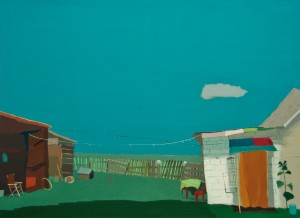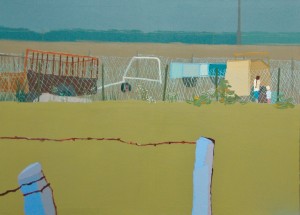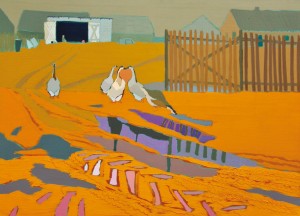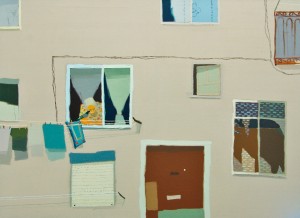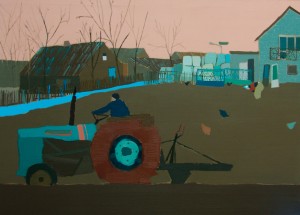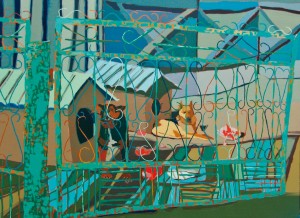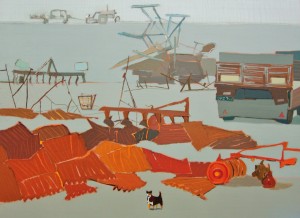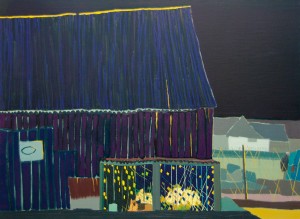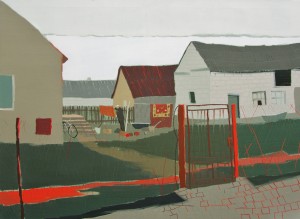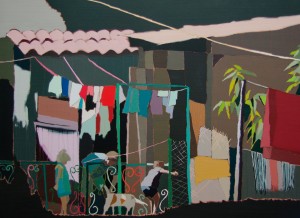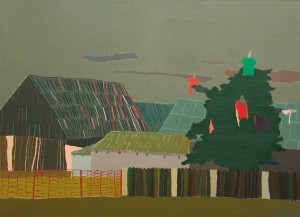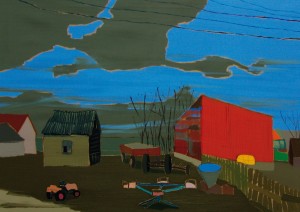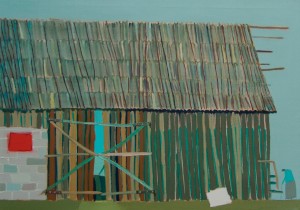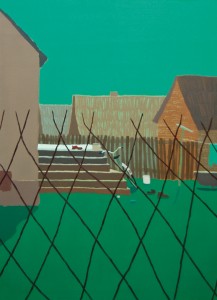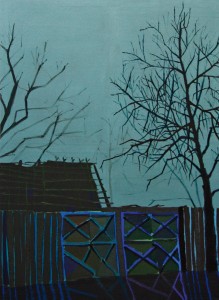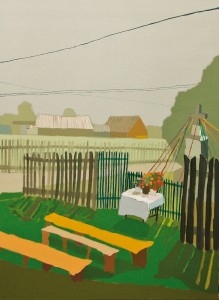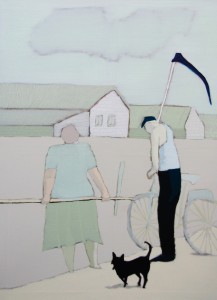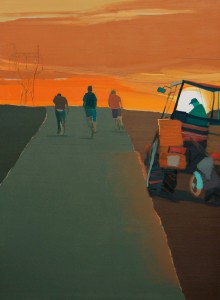Eternit (Lat. aeternus– eternal, immortal) is the title of a series of paintings presented as my degree piece. These canvases share tenderness for flimsy objects extracted from the landscape of contemporary Polish countryside. Careful observation of ordinary, everyday life has led here to purely abstract solutions. Rural backyard is the area of search for an appropriate shortcut to express a whole range of thoughts and emotions. It is about a magical dimension of seemingly uninteresting reality, extracted using light and colour. Eternit roofs, despite dangers associated with asbestos fibres depositing in lungs, remain an integral part of the Polish landscape – and are beautiful.
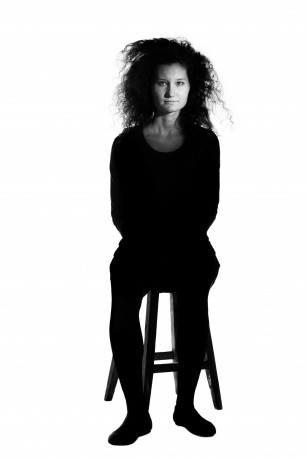
The painting of Magdalena Jędrzejczyk involves the present and the past, so there is nearly entire eternity. Likewise, the Dutch and Flemish used to enjoy countryside in the seventeenth century. Their paintings are full of life, or horses, cows, cats, dogs, hens, roosters, little houses, roofs, windows with flowers and flowers seen through windows, as this is what a countryside looks like, one just has to see and learn to like it.
Magdalena has seen it, because on her grandparents’ farm she feels at home.
For us to enjoy the rural Arcadia, paintings should be accurately, evocatively drawn, have harmonised, depth-giving colour, atmosphere setting the time of day, stability of composition. I think these do.
Professor Krzysztof Wachowiak
B. 1990; studied at the Faculty of Painting of the Academy of Fine Arts in Warsaw (2009–2014) and at the Faculty of Fine Arts of Universidad Politécnica de Valencia in Spain (scholarship under the Erasmus programme, 2011). Fields of artistic activity: easel painting, mural painting. Author of murals at the Paediatric Ward at the Institute of Mother and Child in Warsaw and in Eufemia café in Warsaw; participated in Berliner Liste 2014 art fair. Solo exhibitions: Apteka Sztuki Gallery, Warsaw, 2013; Promocyjna Gallery, Warsaw, 2014.
